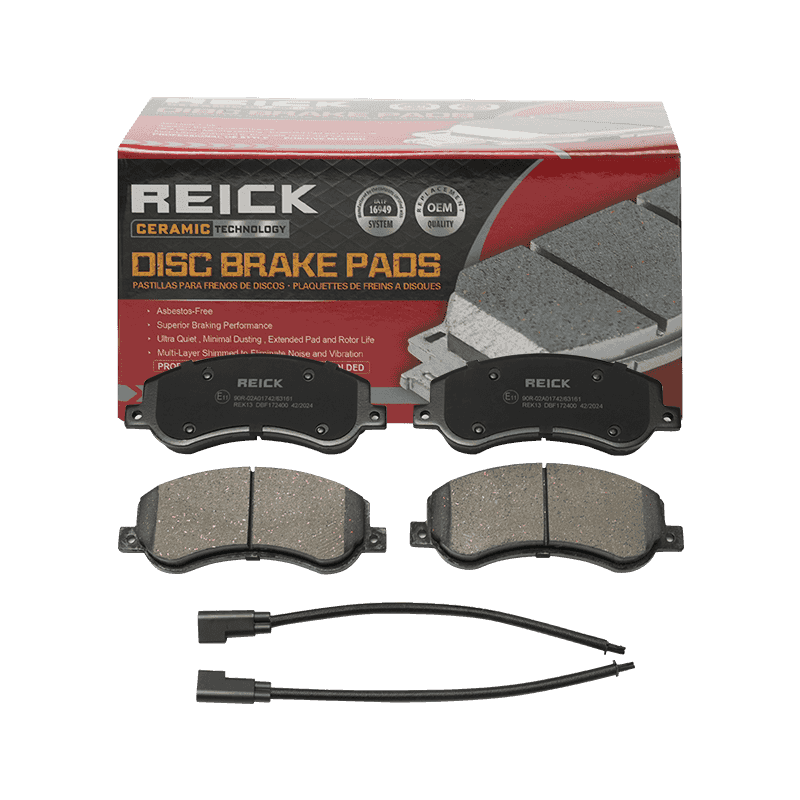 2025.10.24
2025.10.24
 Industry News
Industry News
Brake pads are one of the most crucial components of any vehicle’s braking system. They are responsible for converting the kinetic energy of a moving vehicle into thermal energy, slowing down or stopping the car safely. While most drivers understand the importance of brake pads in general, fewer realize how environmental conditions, especially cold weather, can influence their performance.
Before exploring how cold affects brake pads, it’s important to understand what they are and how they function. Brake pads are friction materials pressed against the brake rotor (or disc) when the driver applies the brakes. The friction generated between the brake pad and the rotor slows the vehicle. The most common types of brake pads include:
Each type of brake pad reacts differently under various conditions, including temperature extremes.
Cold weather can significantly impact brake pad performance. Several factors contribute to this:
At low temperatures, certain brake pad materials, particularly organic and semi-metallic pads, can become harder. This hardening can reduce the pad’s ability to generate sufficient friction against the rotor, leading to decreased braking efficiency. Drivers may notice that it takes longer to stop, or that the brakes feel less responsive when the vehicle is first driven in cold conditions.
Brake pads operate most effectively when they are at their optimal temperature. Cold weather increases the warm-up time required for pads to reach this temperature. Ceramic pads tend to heat up faster and maintain more consistent performance in cold conditions, while organic pads may need more time to generate sufficient friction.
In freezing temperatures, brake pads can become more rigid, which can result in increased noise during braking. Squealing or high-pitched sounds are more common in cold weather, particularly with semi-metallic pads. While often harmless, persistent noise may indicate that the pad material is overly hardened or that there is frost or ice on the rotor surface.
Cold weather often brings moisture, ice, and snow. Even high-performance brake pads can lose some friction when wet, reducing braking efficiency. Moisture can form a thin layer between the pad and rotor, creating a slight slip until the friction material warms up and clears the surface. Drivers should anticipate slightly longer stopping distances in icy or snowy conditions.
Cold temperatures can exacerbate uneven wear on brake pads and rotors. Hardening of the pad material, combined with moisture or ice on the rotor, can lead to uneven contact, causing certain areas to wear faster. Over time, this may reduce the overall lifespan of both the pads and the rotors.

Different brake pad materials react differently to low temperatures:
Maintaining brake pads in cold weather is critical for safety and longevity. Here are some practical tips:
Check brake pads for wear, cracking, or glazing before winter. Glazed pads, which have hardened surfaces due to heat or friction, can perform poorly in cold conditions.
Cold brakes need time to warm up. Gradual braking allows the pad material to reach an effective temperature and reduces stress on the braking system.
Winter conditions introduce salt, snow, and ice. Regular cleaning of brake components helps prevent corrosion and ensures better contact between the pad and rotor.
If you live in extremely cold regions, ceramic or high-quality semi-metallic pads may offer better performance and consistent braking response in winter.
While not part of the pads themselves, brake fluid can thicken in cold weather, slightly affecting overall braking response. Ensuring fluid is fresh and at the correct specification supports optimal pad performance.
Be alert for the following signs:
Early detection and maintenance can prevent accidents and costly repairs.
Brake pads do perform differently in cold weather, and understanding how temperature affects friction, noise, and wear is crucial for safe driving. Material choice, regular maintenance, and mindful driving practices all contribute to optimal braking performance during winter months. By selecting the right type of brake pads and caring for your braking system, you can ensure safer stops and more reliable performance, even in freezing conditions.
Cold weather may challenge your brakes, but with the right knowledge and preparation, you can maintain control, protect your vehicle, and drive safely through winter.